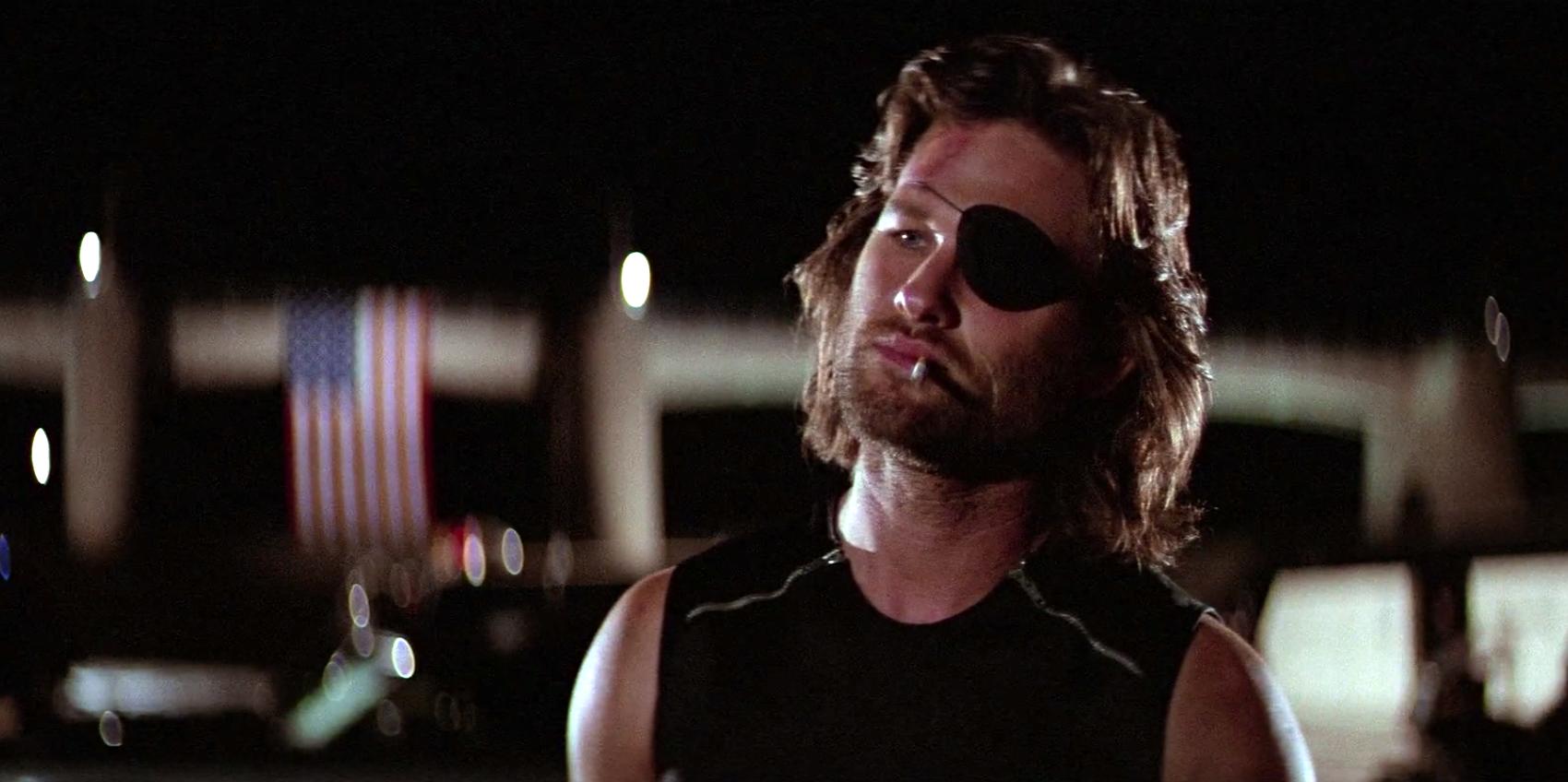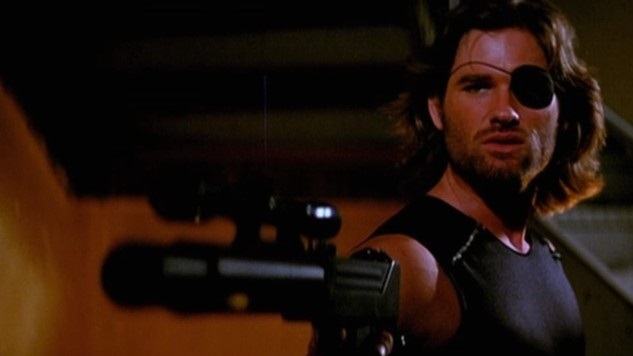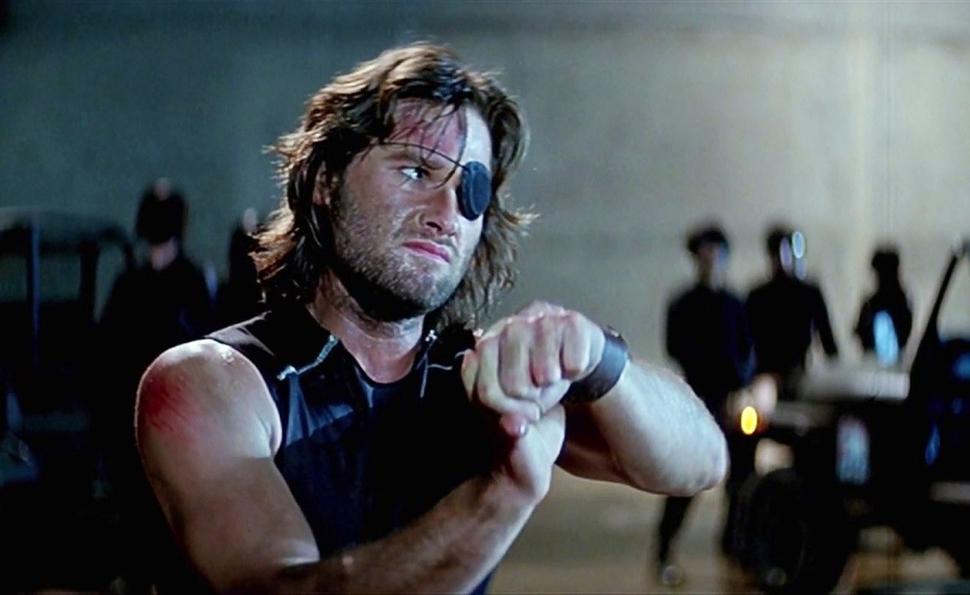
When reflecting on the history of science fiction cinema, it is tempting to look at the effects-driven bombast of 1980s sci-fi action as nothing but vapid genre pictures; braindead macho posturing more similar to Cobra and Commando than the heady, experimental 1970s works of trailblazers like George Lucas and Andrei Tarkovsky. And while it’s true that the rise of the blockbuster, innovations in special effects and an exponentially growing consumer audience led to a sea change in how sci-fi was represented on the big screen, the genre still had room for visionaries. Fresh off the muted success of his Halloween followup The Fog, John Carpenter sought to revisit the object of his film school muse: the future. With 1981’s Escape from New York, Carpenter returns to his roots, reimagining his birthplace as a sprawling, foreboding prison complex, forever defining the tropes and aesthetics of the near-future dystopia in fiction.
In the first of several stellar performances for Carpenter, Kurt Russell leaves the years of Disney family-friendliness behind him as the eyepatched, world-weary Snake Plissken, war hero turned criminal turned reluctant savior. When Air Force One crash-lands inside the citywide prison, the NYPD turns to Snake to rescue the President. The importance of Snake’s mission is twofold: the safety of the President is paramount, but perhaps even more crucial is the survival of the cassette tape he carries, which contains the formula for nuclear fusion; near-future science fiction’s frequent white whale. To up the stakes, he is implanted with an explosive device that is set to detonate in 22 hours; if he returns the President and the tape safely, it will be deactivated. As far as sci-fi action premises go, it’s one of cinema’s most barebones, but the simplicity of the story allows its unique characters and marvelous locales room to breathe.

Image courtesy of pastemagazine.com
Despite the apocalyptic bleakness that pervades Escape from New York and its desolate atmosphere, the film’s most human moments come from within the prison walls. It is no coincidence that the audience never learns what crimes led each prisoner to their fate. Snake’s allies on his quest to save the President are all convicts, yet they all, especially Ernest Borgnine’s affable, swing-loving Cabbie, show more warmth and vitality than the faceless police force that rules over them. Harry Dean Stanton delivers a typically nuanced piece of textbook character work as Brain, an old accomplice of Snake’s imprisoned after a job gone wrong. Adrienne Barbeau’s Maggie is tough-as-nails, and her fierce loyalty to Brain leads to some of the film’s most emotionally resonant moments. And towering over the whole motley crew is Isaac Hayes as the self-described Duke of New York, a power-hungry crime lord who, despite living in squalor in the bombed-out remnants of the Big Apple, travels in style in a souped-up Cadillac. Hayes oozes charisma even as an ice-cold killer, and compared to Lee Van Cleef’s glaring, deceptively sadistic NYPD Chief Hauk, the Duke’s understated menace and chilling bravado makes him a far more engaging antagonist. In post-apocalyptic New York, even the bad guys are more lively on the inside.
Despite being shot primarily in East St. Louis and on L.A. soundstages, Carpenter’s hallucinatory New York is a living, breathing part of the film. The darkness that frames each scene in the city streets, while ostensibly a practical decision to mask some of the film’s low-budget set design choices, becomes an integral part of establishing the bleak tone of the film. Something deadly could be hiding in every dark alleyway, leering building or burnt-out car. In a sense, Carpenter’s New York is the natural culmination of the haunted, rotted-out New York that David Berkowitz stalked in the 1970s; a teeming mass of society’s worst tendencies waiting for the slightest crack in the urban facade to reassert dominance. Escape from New York is a fitting conclusion to the vigilantist filmmaking of Death Wish and The Exterminator – leaving criminals to fester in this crumbling, neo-medieval Manhattan is a bloodless, conscionable death sentence.
Carpenter wisely avoids dwelling too deeply on the complicated morals of this dour, warped criminal justice system. Instead, he trusts his audience enough to know where the film stands without implicitly stating it. The film’s anti-authority slant is more subdued than the brash Reaganaut-baiting of They Live, and as a result, expects more from the viewer’s ability to infer a greater moral. The authoritarian harshness of this near-future is expressed through subtle background detail – as Snake is briefed on his mission at the NYPD’s Liberty Island base of operations, a PA announcer (voiced by Jamie Lee Curtis) tells incoming convicts that they have the option to “terminate” on-site rather than face imprisonment. There is no mistaking that this United States is hardly sympathetic, and Snake is not fighting for a greater good.
Carpenter began writing the film in the wake of Watergate, and the queasy coexistence of crime and government is pervasive through the movie. The idea that a political landscape can even exist in this ravaged world, and what its purpose would be in existing, is a brilliant piece of worldbuilding that invites the viewer to share in Snake’s pessimism. When the United States’ largest city is reduced to a smoldering ruin for the country’s most dangerous and hopeless, is there any world left to save? The America that walled off New York and set its prisoners loose to fight for survival in its ashes is hardly one worth defending. Donald Pleasance’s President is rendered helpless within a prison of his own design, and once he is saved from its clutches, he idly dismisses the human cost of his rescue.

Image courtesy of thedissolve.com
John Carpenter’s best works all hinge upon the Cold War-ripened paranoia that something horrific and apocalyptic looms overhead. Something catastrophic has either already happened or is on the cusp of happening. The suburban ennui of Halloween felt achingly authentic, which made the ensuing bloodbath all the more shocking and visceral; a sign of small-town America’s imminent demise. The end of the world, whether it be from alien invasion or gang warfare run amok, lurks over Los Angeles in They Live and Assault on Precinct 13. The claustrophobic research outposts and frozen badlands of The Thing are the breeding grounds for a true doomsday scenario, born of mistrust and fear more parasitic than the titular shapeshifting alien itself. Escape from New York’s hazy, torchlit vision of societal regression is the apotheosis of Carpenter’s quest to capture the moments before annihilation.